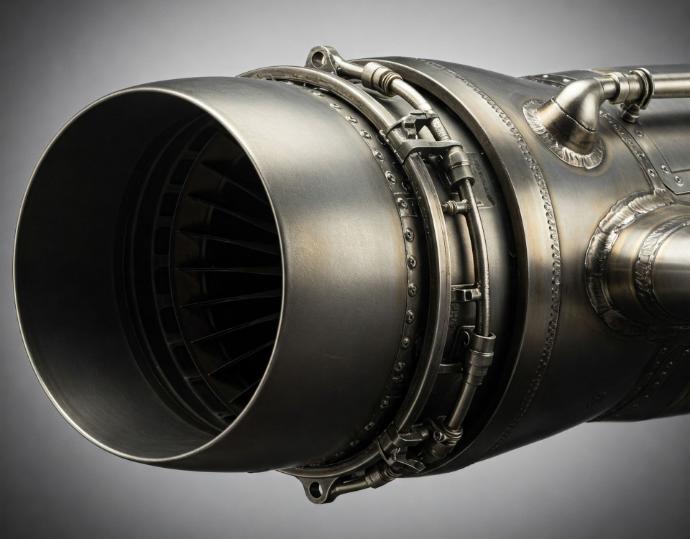Aircraft Exhaust System FAQs: Everything You Need to Know

Aircraft exhaust systems are a critical yet often overlooked component of aviation technology. Not only do they expel waste gases, but they also contribute to engine efficiency, noise reduction, cabin heating, and overall aircraft performance. In this post, we’ll dive into the most frequently asked questions about aircraft exhaust systems and explore how understanding these systems can improve both safety and performance in aviation.
What Role Do Aircraft Exhaust Systems Play in General Aviation?
Aircraft exhaust systems are essential for much more than simply venting engine byproducts. They are designed to.
Optimize engine performance
By managing back pressure, these systems help in extracting maximum power from the engine.
Reduce noise levels
Mufflers and other components help lower the sound produced during engine operation.
Assist in cabin heating
By directing warm air generated by the exhaust, these systems contribute to a more comfortable cabin environment.
Improve overall safety
Efficient exhaust management helps prevent overheating and potential engine malfunctions.
What Are the Key Components of an Aircraft Exhaust System?
A typical aircraft exhaust system comprises several integral components.
Exhaust Manifold
Collects exhaust gases from multiple cylinders.
Exhaust Stack
Directs the gases safely away from the aircraft.
Heat Exchangers
Reduce noise and repurpose residual heat for cabin heating.
Augmenter Tubes and Wastegates
Found in turbocharged systems, these help manage additional airflow and maintain optimal engine conditions.
Understanding these parts not only aids in maintenance but also in troubleshooting issues which is essential for any discussion with your aircraft parts suppliers when replacements or upgrades are needed.
How Do Heat Exchangers Contribute to Cabin Heating?
Heat exchangers serve a dual purpose. They allow external air to pass over heated exhaust pipes, where the air absorbs the heat. This warm air is then redirected into the cabin, providing a natural and efficient heating method for both pilots and passengers. This process is a fine example of engineering that turns what would be waste heat into a useful resource.
What Are Augmenter Tubes and Their Function?
Augmenter tubes are designed to create low-pressure areas by channeling exhaust gases. This low-pressure effect draws additional air out of the engine compartment, which in turn enhances the cooling of engine components—especially crucial during demanding flight conditions. Their role is vital in maintaining a balanced and efficient operating environment within the aircraft.
How Do Aircraft Exhaust Systems Differ in Turbocharged Aircraft?
Turbocharged aircraft have a more complex exhaust system. They incorporate wastegates, which are used to control the amount of exhaust gas directed towards the turbocharger. This control is essential for:
Regulating boost pressure
Enhancing engine performance
Preventing over-pressurization
The precision required in these systems means that regular monitoring and adjustment are a necessity to guarantee safe operations.
Why Is Regular Maintenance Crucial?
The integrity of an aircraft exhaust system is directly linked to the overall safety and performance of the aircraft. Regular maintenance and inspections can detect.
Cracks and leaks
Erosion or thinning of pipes
Excessive carbon build-up
Heat discoloration
Early detection of such issues is critical. Even if you are managing your own fleet or sourcing components from aircraft parts suppliers, staying proactive with maintenance can prevent the chances of engine failures.
What Are the Environmental Implications?
Aircraft exhaust emissions play a role in air pollution and climate change by releasing harmful substances. The industry is actively exploring cleaner fuels and innovative exhaust designs to reduce these environmental impacts. As regulations tighten globally, ongoing research and improvements in exhaust system technology remain a priority.
What Safety Measures and Regulations Govern These Systems?
Regulatory bodies such as the FAA and EASA have put in place strict standards for aircraft exhaust systems. Key safety measures include:
Proper installation and adherence to design specifications
Compliance with vibration and temperature criteria
Regular inspections and maintenance protocols
These guidelines are in place to make sure that the exhaust systems operate safely and reliably throughout the aircraft’s lifecycle.
How Do Standard Operating Procedures (SOPs) Enhance Safety?
Standard Operating Procedures (SOPs) are essential for maintaining the safety and functionality of aircraft exhaust systems.
Step-by-step instructions for routine operations
Guidelines for troubleshooting and emergency scenarios
Assurance that all system checks are performed methodically
What Happens If You Don’t Inspect Your Aircraft Exhaust?
Neglecting regular inspections can lead to severe consequences, including:
Complete engine failure
Reduced aircraft performance
Safety hazards during flight operations
Regular checks are a necessity to avoid potential failures that can be devastating and to make sure that your aircraft remains in peak condition.
Conclusion
Understanding the intricacies of aircraft exhaust systems is crucial for anyone involved in aviation, whether you are an operator, maintenance engineer, or sourcing components through reliable aircraft parts suppliers. These systems play a vital role in engine performance, safety, environmental compliance, and overall aircraft efficiency. By staying informed through these Aircraft exhaust FAQs, you can ensure that your aircraft operates safely and effectively, contributing to a smoother, more efficient flight experience.
